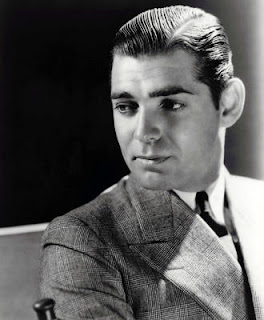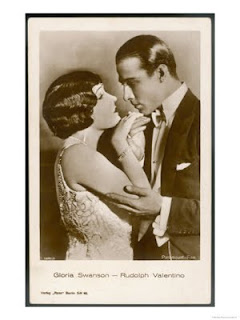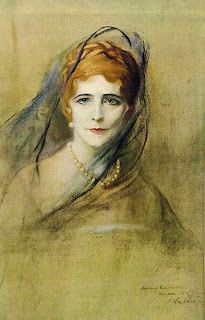Time for more random encounters! Hope you find these entertaining ;)
When Louise Brooks and her new husband, director Eddie Sutherland (above), finally made the move from New York to Los Angeles, they were looking for a bungalow to call their own. While out house-hunting, they found an apartment that seemed to be a good fit. However, they got a shock when they knocked on the landlady's door: it was Mary Miles Minter (below), the reclusive actress who had gone into hiding, and slightly mad, after the scandalous death of William Desmond Taylor! How the mighty had fallen... Though Mary seemed harmless, albeit a bit loopy, Louise and Eddie decided to look elsewhere, settling down in the luxurious Laurel Canyon near soon-to-be pals John Gilbert and King Vidor.
Clara Bow was a huge success when she began filming on The Plastic Age. The entire American population seemed to have fallen in love with her, as well as her co-star, Gilbert Roland, with whom she would have an on-again-off-again affair for years to come. Though Clara was the current talk of the town, there was a man destined to be an equally huge star lingering in the crowd of extras. Knowing Clara's eye for attractive men, it is quite possible she noticed the young and handsome Clark Gable, but the two never had any kind of relationship. The same could not be said of Gary Cooper, who later had a bit part as a reporter in It and the male lead opposite her in Children of Divorce. These two became lovers, and Clara didn't mince words when describing just how "huge" a star Coop really was!
~ ~ ~
Wallace Reid (above with pal Adela Rogers St. Johns) was slowly making his name in the business when he made the film The Ways of Fate in 1913. People had begun to take notice of the handsome leading man, but it would be another two years-- after he took his shirt off in Birth of a Nation-- that his star really began to rise! However, with his good looks and charm, he seemed to be a shoe-in for success, unlike the quiet, character actor who was milling about the Fate set as an extra. It would take another six years before Lon Chaney (below) crawled to fame as the contorting, "crippled" con-man, Frog, in The Miracle Man. After this show of gut-wrenching acrobatics, the entire world would know his face, or rather faces. All 1000 of them!
~ ~ ~
When Vivien Leigh (right) was attending the Convent of the Sacred Heart in Roehampton, England, she was already certain of her future. She knew that she wanted to be an actress, and she had no qualms about telling pretty much every one within ear shot that she was going to be a star! Imagine her surprise when, as a struggling actress, it was one of her old classmates who made it to the big screen first: Maureen O'Sullivan (below with Johnny Weissmuller)! After seeing Maureen in Tarzan the Ape Man of 1932, Vivien was more determined than ever to make it! She used her friend's success to re-light the fire in her own belly. She worked hard and tread the boards of the stage before making an on-screen debut in 1935's Look Up and Laugh. She would have to wait another 4 years for the role of a lifetime in Gone with the Wind.
Most stage mothers push their children into the business to fulfill their own desires to be famous. Such was the case with Jean Harlow's mother: Jean Harlow! The younger Jean's given name was actually Harlean. She took her mother's name as her stage name when she began acting. (I wonder whose idea that was)? In 1923, Mama Jean and Baby Jean would move from Kansas City to Hollywood so that the senior lady could pursue a career on the silver screen. However, because Mama lacked the charisma later found in her daughter, they only remained for two years before packing it in and returning to Missouri. During her first brief stint in H-town, Baby Jean would attend The Hollywood School for Girls where she would befriend its only two male students: Douglas Fairbanks Jr. and Joel McCrea (below, respectively). In a few years time, these three tykes would be reunited, but this time as major Hollywood superstars!!!




































